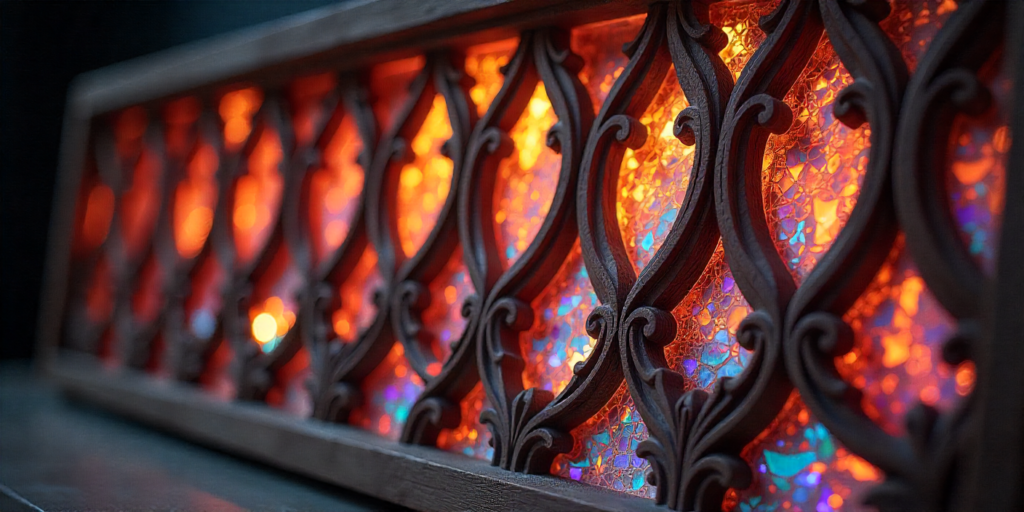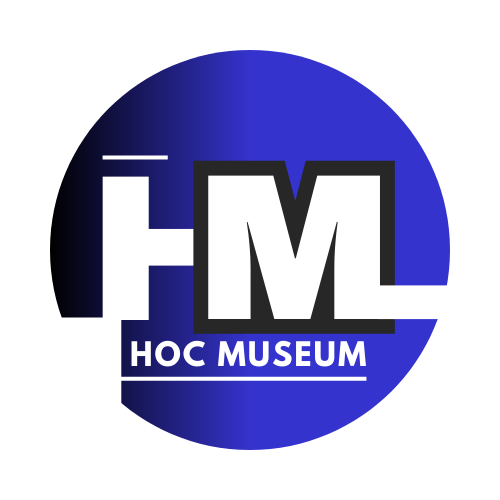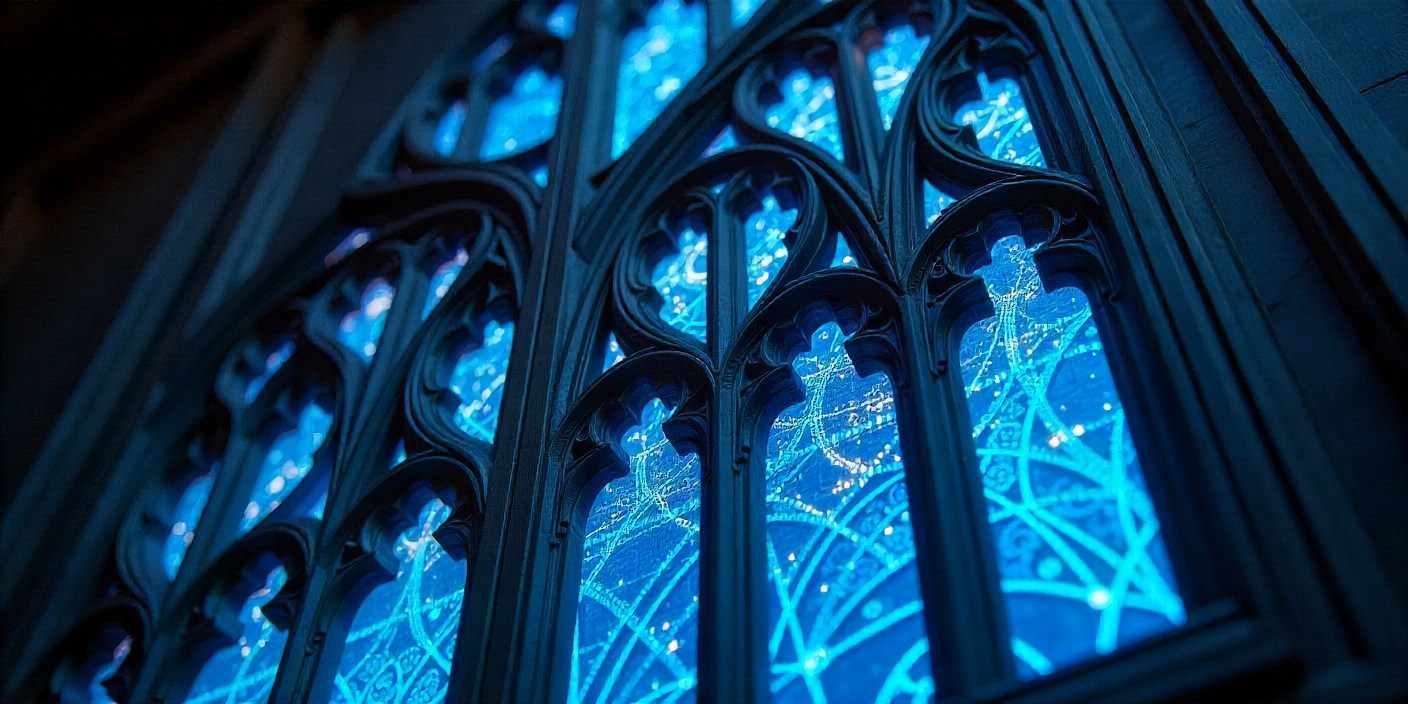Assume stumbling into a gallery where a meticulously crafted Renaissance-style portrait suddenly flickers, revealing a complex digital universe swirling beneath its oil-painted surface. Or witnessing a centuries-old pottery technique, practiced with reverence, used to create biomorphic forms only conceivable with 3D printing. What if the most thrilling frontier in art today isn’t about rejecting the past, but radically, joyfully reimagining it? Welcome to the electrifying world of acamento. This isn’t just a buzzword; it’s a vibrant, conscious movement where artists dive deep into the wellsprings of historical art – its techniques, philosophies, and material wisdom – and then fearlessly splice in the DNA of the contemporary: AI, bio-art, VR, cutting-edge materials, you name it. More than mixed media, acamento is a profound dialogue across centuries, a way to make tradition breathe with fresh, urgent life. In an age of digital saturation and fleeting trends, acamento answers a deep hunger for connection, meaning, and a sense that progress doesn’t have to erase history – it can amplify it.
What Exactly Is Acamento? (Beyond the Buzzword)
Let’s cut through any hype. Acamento isn’t slapping a digital “glitch” filter on a Vermeer reproduction. It’s not just juxtaposing old and new objects randomly. Think of it like this: Acamento is the master chef who inherits a beloved, ancient family recipe – say, for a perfect sourdough. They understand the why behind every step, the microbial alchemy, the generations of touch. But then, instead of just replicating it, they source hyper-local, futuristic ingredients – maybe algae flour rich in protein or a sustainably farmed, never-before-tasted berry – to create a loaf that honors the heritage in every tangy bite while exploding with unexpected, contemporary flavors and textures. The soul of the old recipe is there, but the experience is entirely new.
It’s a deliberate practice, a methodology. Artists practicing acamento engage in deep research and often rigorous training in historical techniques (like fresco secco, Japanese urushi lacquer, or intricate metal chasing). They grapple with the philosophy behind the art – the reverence for materials, the pursuit of beauty or narrative, the cultural significance. Then, and this is crucial, they bring in the tools and concepts of now: algorithms, virtual modeling, responsive sensors, engineered materials, AI analysis. The innovation isn’t decorative; it’s integral, transforming the tradition to express something relevant to our moment. The term itself seems to have bubbled up organically from studio conversations – a portmanteau hinting at “acumen” (shrewdness, skill) meeting “memento” (a reminder of the past), perfectly capturing its spirit of intelligent remembrance and reinvention.
The Timeless Thread: Honoring Tradition in Acamento
The “traditional” in acamento isn’t a vague nod to the past; it’s a deep dive. Artists are drawing from specific, often demanding, historical practices and philosophies. This reverence is foundational. Why? Because these traditions offer:
- Mastery & Materiality: The physical skill required in hand-forging metal, layering glazes, or weaving intricate textiles carries a weight and presence digital creation often seeks to emulate. Acamento artists value this tangible connection.
- Cultural Resonance: Techniques and forms are often vessels of cultural memory and identity. Using them consciously connects the new work to a lineage.
- Historical Weight & Wisdom: Old Masters weren’t just technicians; they were thinkers grappling with light, form, narrative, and human experience. Their solutions hold enduring power.
- Slow Craft in a Fast World: The deliberate pace of mastering a traditional technique becomes a counterpoint to digital speed, adding intentionality.
What kinds of traditions are fueling acamento? Here’s a glimpse:
- Painting Techniques: Baroque chiaroscuro (dramatic light/shadow), Renaissance sfumato (soft blending), encaustic (hot wax), miniature painting, iconography.
- Sculptural Methods: Lost-wax casting, stone carving, wood joinery, direct metal sculpture.
- Craft Traditions: Japanese Urushi lacquerware, Korean Onggi pottery, intricate textile weaving (tapestry, ikat), glassblowing, bookbinding.
- Philosophical/Aesthetic Concepts: Wabi-sabi (beauty in imperfection), the Golden Ratio, sacred geometry, allegorical storytelling.
- Processes: Fresco secco (painting on dry plaster), natural dye processes, hand papermaking.
The artist doesn’t just use the technique; they converse with its history and inherent meaning, setting the stage for a transformative dialogue with innovation.
The Spark of the New: Innovation’s Role in Acamento
If deep tradition is the anchor, cutting-edge innovation is the sail propelling acamento forward. But crucially, the tech isn’t used for its own sake. It’s wielded to interrogate, expand, or recontextualize the traditional element, creating entirely new experiences and meanings.
Modern tools and concepts finding their way into the acamento dialogue include:
- Artificial Intelligence: Analyzing historical styles to generate new compositional frameworks, creating “conversations” between AI and old masters, manipulating traditional imagery.
- Augmented & Virtual Reality (AR/VR): Overlaying digital narratives onto physical artifacts, creating immersive environments based on historical sites or artworks, adding layers of information or animation.
- 3D Printing & Scanning: Replicating or reimagining historical forms with impossible geometries, creating molds for traditional casting, digitally preserving fragile heritage.
- Bio-Art & Material Science: Growing materials inspired by historical pigments or textures, engineering ceramics with new properties (color-shifting, self-healing), using living organisms.
- Digital Fabrication: CNC machining, laser cutting used to execute complex designs based on traditional patterns or principles.
- Projection Mapping & Interactive Tech: Animating static historical forms, making art responsive to viewer presence or input.
- Algorithmic & Generative Art: Using code to create patterns or forms inspired by historical motifs or mathematical principles found in ancient art.
Read also: The Heartbeat of Tradition: Unraveling the Magic of Iganiny
Traditional Element vs. Innovation Integration vs. Example Outcome
| Traditional Element | Innovation Integration | Example Outcome |
| Byzantine Mosaic | Projection Mapping & Motion Sensors | A mosaic wall depicting saints dynamically shifts scenes based on viewer proximity, revealing hidden narratives. |
| Baroque Chiaroscuro | Volumetric Light Projection (VR) | A VR experience where the viewer becomes the light source in a Caravaggio-esque scene, manipulating shadows dramatically in real-time. |
| Korean Onggi Pottery | 3D Clay Printing & Nano-engineered Glazes | Large-scale, organically shaped vessels, impossible by hand, glazed with materials that change color with temperature or light, referencing nature’s cycles. |
| Oral Storytelling Traditions | Location-Based AR & Binaural Audio | Walking through a modern city, viewers hear ancestral stories specific to their exact location, overlaid visually through AR on their device. |
| Renaissance Portrait Painting | AI Style Analysis & Robotic Arm Painting | A robotic arm, trained on Rembrandt’s brushwork dynamics, creates portraits of contemporary figures addressing modern social issues, in a physically textured oil medium. |
The intention is key. Innovation in acamento isn’t just “cool tech.” It’s used to:
- Deepen Meaning: Make historical themes resonate with contemporary audiences in visceral ways.
- Challenge Perspectives: Show how old forms can speak to new realities.
- Create Hybrid Experiences: Offer multisensory encounters that couldn’t exist before.
- Preserve & Reinterpret: Use new tools to document, understand, and creatively extend traditional knowledge.
- Democratize Access: Allow artists to engage with complex traditions through digital modeling or simulation, lowering barriers to entry.
Why Acamento Matters: The Benefits for Art & Audience
Acamento isn’t just an art world curiosity; it’s a vital response to our cultural moment, offering unique value:
- Bridges the Historical Divide: It shatters the false dichotomy between “old” and “new” art, showing them as part of a continuous, evolving conversation. It makes historical art feel relevant and exciting to younger generations.
- Preserves Craft Knowledge in a Digital Age: By requiring engagement with traditional skills, acamento ensures these techniques aren’t lost. It validates their importance even as it transforms them.
- Fosters Hybrid Mastery: It demands artists develop deep technical skills alongside digital fluency, creating a new kind of artistic polymath.
- Creates Truly Unique Experiences: Acamento works offer something neither purely traditional nor purely digital art can: the tangible weight of history fused with the dynamic possibilities of the future. It’s often deeply immersive and engaging.
- Sparks Critical Dialogue: It forces us to question: What is authenticity? How do we value art? What is progress? It challenges notions of originality and appropriation in productive ways.
- Democratizes Access (Potentially): While mastering traditional crafts takes time, digital tools can allow more artists to explore and reinterpret historical forms, spreading knowledge and appreciation. Online platforms also make this art more accessible globally.
- Offers Meaning in a Fragmented World: By rooting innovation in deep tradition, acamento provides a sense of connection and continuity, countering the often-disorienting pace of technological change.
In short, acamento enriches the entire art ecosystem, offering audiences profound new experiences and artists a powerful, resonant framework for creation.
Acamento in Action: Real-World Pioneers
Seeing is believing. Let’s look at a few artists embodying the acamento spirit (Note: While “acamento” is a conceptual framework here, these artists exemplify its principles):
- Elena V. (Digital Painter): Elena doesn’t just mimic Old Masters digitally. She feeds high-resolution scans of Rembrandt’s canvases into AI models, not to copy, but to deeply analyze the master’s brushwork pressure, stroke direction, and pigment layering at a microscopic level. She then uses this data to train a sophisticated robotic arm. The arm applies physical oil paint onto canvas, guided by Rembrandt’s technique, but Elena directs it to create portraits exploring modern themes of digital identity and neural networks. The result? Textured, visceral paintings that feel centuries old yet speak directly to our algorithmic age. The tradition isn’t pastiche; it’s the very language used for contemporary expression.
- David K. (Ceramicist & Material Innovator): David is a master of traditional Korean Onggi techniques – hand-coiling large, breathable earthenware vessels used for fermentation. But his forms defy gravity and convention. He designs intricate, flowing, almost biological structures in VR, manipulating virtual clay with gestures that echo the physical process. These digital designs guide 3D clay printers. After printing, he applies glazes not just made from traditional minerals, but incorporating nano-engineered particles. The result? Monumental Onggi-inspired vessels with impossible curves, glazed in colors that subtly shift from deep indigo to iridescent green as you move around them, or even change with ambient temperature, creating a dynamic dialogue between ancient fermentation wisdom and futuristic material science.
- Memory Echo (Artist Collective): This collective focuses on preserving and revitalizing endangered oral storytelling traditions from diverse indigenous and diasporic communities. They work deeply with elders and cultural keepers to record and understand the stories, their rhythms, and their deep connection to place. Then, they use location-based AR technology. As viewers walk through specific urban or natural landscapes holding their devices, they trigger binaural audio recordings of these ancestral stories, precisely geolocated. Visual AR overlays might show symbolic animations or historical imagery relevant to the narrative and location. Acamento here is the fusion of the ancient, embodied practice of oral storytelling with hyper-modern geospatial tech, overlaying layers of memory onto the contemporary landscape, making the past palpably present.
These pioneers show acamento isn’t a style; it’s a multifaceted approach where the blend of old and new is unique to each artist’s vision and the specific traditions they engage with.
Experiencing Acamento: How to Engage as a Viewer (or Artist!)

So, you encounter an acamento piece. How do you dive in?
For Viewers:
- Look for the Dialogue: Don’t just see “old + new.” Ask: How are they talking? Is the tech revealing something hidden in the tradition? Is the tradition grounding the tech? What’s the conversation about?
- Research (a little): If you recognize the traditional element (e.g., “That looks like a fresco!” or “Those patterns remind me of…”), a quick search later can deepen your appreciation immensely. What was the original context?
- Engage Fully: If it’s interactive (responsive sensors, AR elements), participate! Move around, touch if allowed, use the app. The experience is often designed to unfold with your interaction.
- Don’t Fear the Tech: The technology isn’t a barrier; it’s a bridge. Let it enhance your connection to the historical core.
- Embrace the Hybrid Feel: It might feel unfamiliar – that’s the point. Sit with that sensation. It’s the friction between epochs creating the spark.
For Aspiring Artists:
Feeling inspired to explore acamento yourself? Here’s how to start:
- Deep Dive into ONE Craft: Don’t try to master everything. Choose one traditional technique or philosophy that fascinates you (e.g., cyanotype printing, woodblock carving, the concept of wabi-sabi). Study its history, materials, and core principles. Seek workshops or mentors if possible.
- Learn a Relevant Digital Tool: What modern tool could converse with your chosen tradition? Is it 3D modeling (Blender, ZBrush)? Basic coding (Processing, p5.js)? AR development (Unity + Vuforia)? AI image generation (Midjourney, DALL-E – ethically and critically!)? Start small; learn the basics.
- Experiment Fearlessly (and Fail): The magic is in the unexpected collision. What happens if you feed scans of your hand-carved block into an AI texture generator? Can you 3D print a mold based on a digitally deformed historical pattern? Can VR help you visualize a fresco in a non-existent space? Play!
- Seek Collaborations: You don’t have to be a master of both worlds! Partner with a traditional craftsperson or a digital whiz. Acamento thrives on cross-pollination.
- Concept is King: Always lead with why. What do you want to say? How does fusing this tradition with this technology help express that idea more powerfully than either could alone? Avoid gadgetry for gadgetry’s sake.
What tradition are you most excited to see reborn through acamento’s innovative lens? Share your thoughts!
Conclusion
Acamento is more than a trend; it’s a vital sign of art’s enduring pulse. It proves that the deepest roots can nourish the most futuristic blooms. By fostering a dynamic, respectful, and radical dialogue between the meticulous wisdom of the past and the boundless potential of the present, acamento artists aren’t just making fascinating objects; they’re redefining what art can be and do. They’re ensuring that heritage isn’t locked in a museum case but is a living, evolving force, constantly reinterpreted to illuminate our own complex times. In a world often obsessed with the new for its own sake, acamento offers a richer path: one where the future is built hand-in-hand with the past, creating an art that resonates with both profound history and thrilling possibility. The canvas of time is vast, and acamento artists are painting across all of it. So, what tradition ignites your imagination? What legacy are you inspired to reimagine through acamento’s bold, bridging spirit?
FAQs:
Q1: Is acamento just a fancy name for using old and new stuff together?
A: Not quite! While it involves both, acamento is defined by the intentional dialogue and deep engagement. It’s not random mixing. It requires understanding and respecting the tradition first, then integrating innovation in a way that transforms both, creating something conceptually new and meaningful. It’s methodology over mere material combination.
Q2: Do acamento artists need to be masters of both traditional and digital techniques?
A: Mastery is ideal but not always required, especially when starting. Deep respect and understanding of the tradition are crucial. Many successful acamento artists collaborate (e.g., a traditional ceramicist with a 3D printing expert) or focus intensely on mastering one domain while strategically learning relevant aspects of the other. The key is conceptual clarity about how the fusion serves the artwork’s purpose.
Q3: Where can I actually see acamento art?
A: Look beyond traditional galleries! Check out:
- New Media Art Festivals: Ars Electronica (Linz), FILE (São Paulo), ZERO1 (San Jose), Transmediale (Berlin).
- Progressive Galleries: Those specializing in digital art, hybrid practices, or contemporary craft.
- Museum New Media Wings: Institutions like the V&A (London), SFMOMA, or the Smithsonian often feature boundary-pushing work.
- Online Platforms: Sedition, Artsy, and artist-specific websites/Instagram accounts.
- University Art Departments & Tech Incubators: Hotbeds for experimentation.
Q4: Isn’t using AI or tech in traditional art somehow “cheating”?
A: This is a common concern, but acamento reframes it. The “cheating” argument often assumes the sole value is in manual dexterity. Acamento values the concept, the dialogue, and the final experience. Using AI as a tool to analyze Rembrandt’s brushwork for new creation, or a robot to execute complex forms for ceramics, is no more “cheating” than using a power loom was to hand-weavers. It’s a new toolset enabling new forms of expression rooted in understanding tradition. The artist’s vision and choices remain paramount.
Q5: How is acamento different from other movements like postmodernism or appropriation art?
A: While there can be overlap, key differences exist:
- Postmodernism: Often deconstructed or critiqued history with irony or skepticism. Acamento engages with deep respect, seeking transformation and continuity rather than solely deconstruction or critique.
- Appropriation Art: Focuses on recontextualizing existing imagery (often mass-media) to critique authorship or culture. Acamento appropriates techniques, materials, and philosophies rather than finished images, with the goal of synthesis and creating new meaning through fusion, not just commentary on the source.
Q6: Can acamento apply to performing arts or just visual arts?
A: Absolutely! The core principle – deep engagement with tradition fused fearlessly with contemporary innovation – applies everywhere. Imagine:
- Theater: Noh or Kabuki techniques combined with real-time motion capture and generative visuals.
- Dance: Classical ballet forms integrated with wearable sensors that trigger soundscapes or light based on movement.
- Music: Ancient instruments or tuning systems used alongside algorithmic composition or live electronic processing. The fusion is the key.
Q7: What’s the biggest challenge for acamento artists?
A: Bridging the knowledge gap is huge. Truly mastering even one traditional craft can take a lifetime, while digital tools evolve rapidly. Finding the time and resources for deep learning in both spheres is demanding. Other challenges include securing funding for complex hybrid projects, finding venues equipped for tech integration, and navigating critical reception that might misunderstand the intent as gimmickry rather than deep conceptual work. It requires immense dedication and resilience.
You may also like: Chromokopia: The Intersection of Art, Science, and Technology

